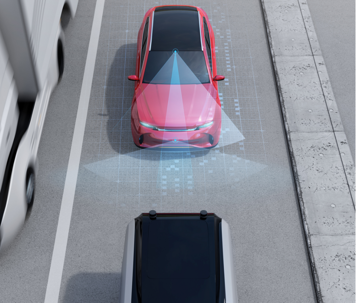Is it possible for your car to be able to react faster than you can? Yes and no. With automatic emergency braking systems, accidents can be avoided. After all, half a second can be the difference between an accident and no accident.
When a car detects a potential collision, an active safety system activates the car’s brakes for you. This means that without the driver
touching the brake pedal, the brakes are triggered. Automatic emergency braking systems also can increase the force of braking if the vehicle
determines that the driver is not applying the brakes at a great enough force to avoid a collision ahead.
Imagine you are driving along and your car just starts braking on its own — that’s startling! The automatic emergency braking system pairs with forward and/or reverse collision warning systems to help to eradicate this phenomenon. Usually, the forward collision warning will indicate with a loud beeping that an object is ahead and give the driver the opportunity to brake. If the driver does not brake hard enough (or at all), that’s when the automatic emergency braking system steps in.
But how exactly does the automatic emergency braking system work? Some vehicles have radar sensors within their front bumper or grill to detect objects ahead and are then calibrated. Others utilize a camera that is usually installed in the windshield behind the rearview mirror. Software is then used to measure the potential of a vehicular crash based on all the sensory data collected.

